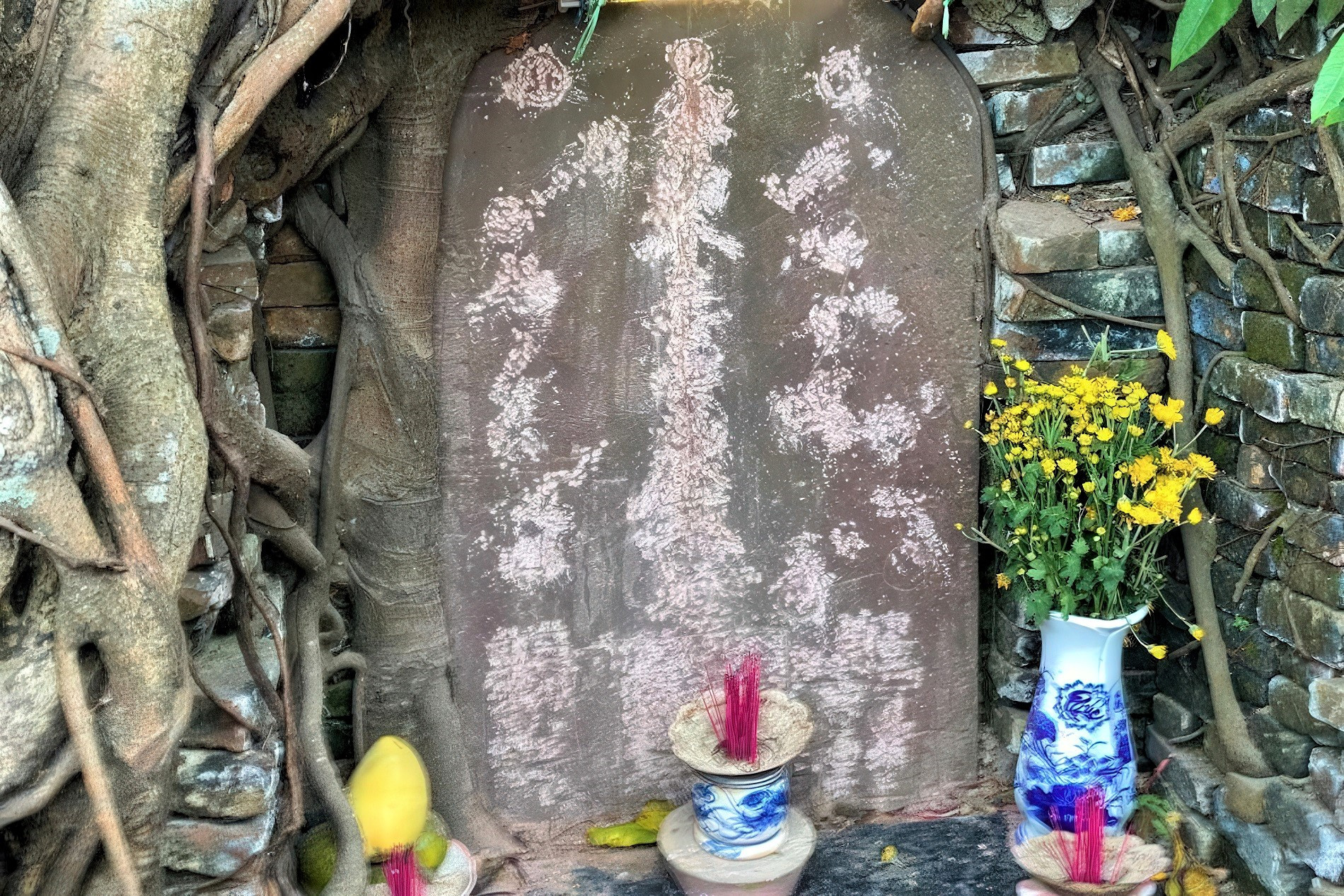Police in Hoi An are investigating the vandalism of a centuries-old stele believed to serve as a spiritual seal located beneath a sacred banyan tree near the iconic Chua Cau (Japanese Covered Bridge) in the ancient town.

On the afternoon of April 1, the Hoi An Center for Cultural Heritage Conservation reported the incident to the Hoi An City People’s Committee. The stele, historically linked to waterway protection and spiritual beliefs, had been defaced and partially destroyed.
Earlier that morning, local residents visiting the banyan tree beside house number 98A on Phan Chau Trinh Street for routine offerings and cleaning discovered the surface of the stone stele had been deliberately chiseled and erased.
According to Pham Phu Ngoc, Director of the Hoi An Cultural Heritage Conservation Center, local authorities, including representatives from Cam Pho Ward and the center, promptly surveyed the scene. They confirmed that the stele's inscribed text and engraved imagery had been almost entirely obliterated.
The center has officially reported the incident to Cam Pho Ward police and requested that the Hoi An People’s Committee direct relevant agencies to launch a full investigation and prosecute those responsible under Vietnam’s cultural heritage protection laws.
The damaged stele, officially listed in Hoi An’s inventory of cultural-historical relics, is located within Protection Zone 1 of the Hoi An Ancient Town, a national special relic and UNESCO World Heritage Site.
Positioned within a small brick shrine nestled in the roots of the protected banyan tree, the stele faces north. It bears Chinese characters that translate to “Northern Emperor’s decree to establish the sacred geomantic seal for water channel protection”, along with symbols resembling spiritual talismans. The site is approximately 300 meters from Chua Cau.
Researchers believe the stele was erected to spiritually regulate waterways and is linked to the local worship of the deity Bắc Đế Trấn Vũ (Northern Emperor Zhenwu), whose veneration is associated with the nearby Chua Cau site.
Ha Nam